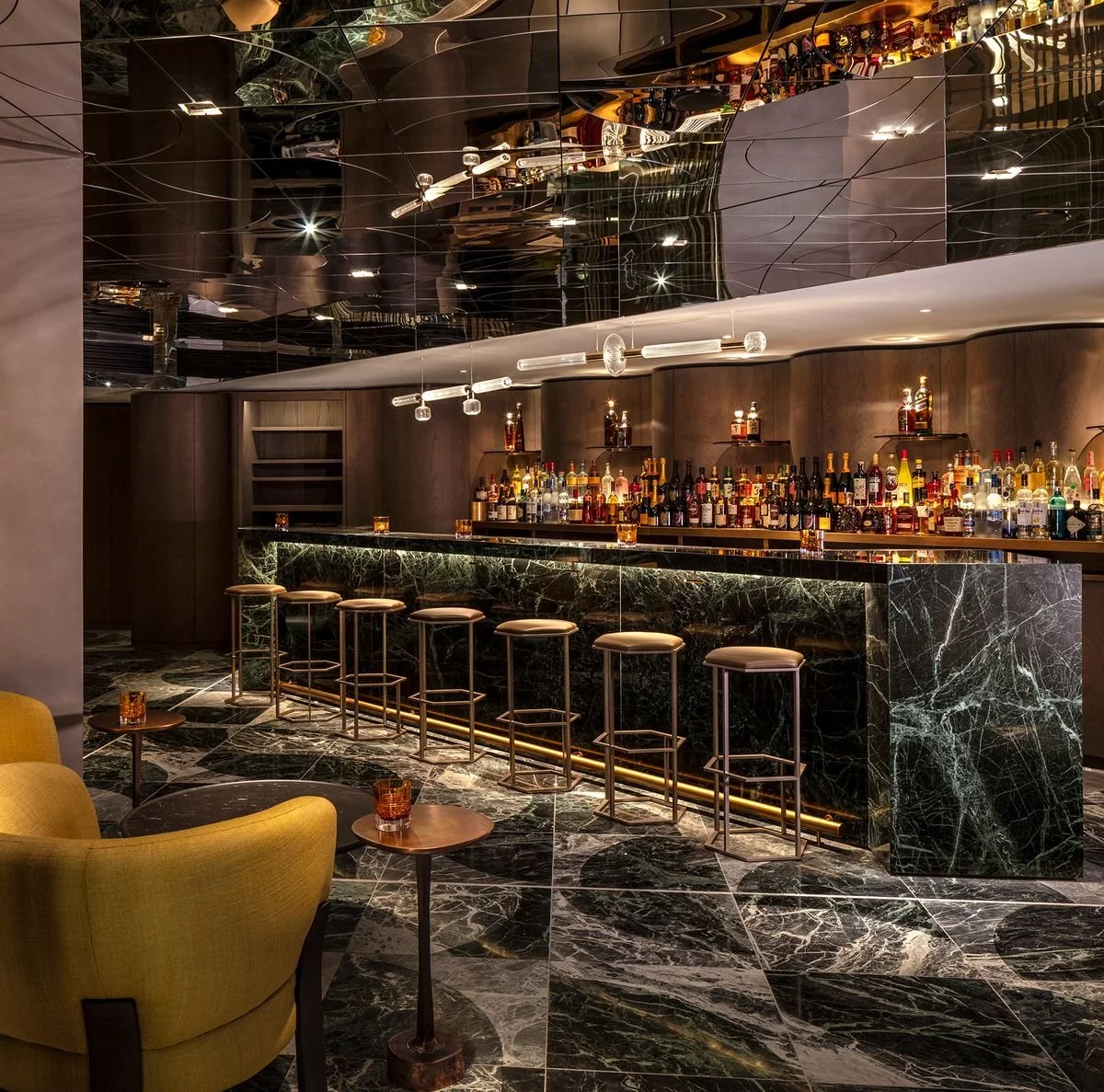The Role of Design in Shaping Restaurant Identity
The Londoner Hotel
When customers visit your restaurant, they expect tasty food and good service. But they’re also looking for a welcoming atmosphere too. In the hospitality industry, designing an inviting yet practical space isn’t just about the fixtures or fittings; it’s about establishing your identity.
What is restaurant identity and why does design matter?
When chefs are training, many of them learn that the first bite of a meal isn’t taken with the mouth, but with the eye. The presentation of a dish is incredibly important in establishing an identity of the restaurant. When executed correctly, the presentation can evoke a sense of personality, and establish expectations with the consumer – all adding to the dining experience.
This is just as important for restaurant design as it is for chefs and their signature dishes.
Restaurant interior design is one of the most important things to consider when opening a new venue. Not only does it enhance the food, but it also creates an unforgettable customer experience – one that keeps customers wanting more!
How can design influence a restaurant's brand perception?
Design is incredibly powerful when it comes to how your brand is perceived by the public. Elements such as colour scheme, your logo, what font you use, and even the style of décor all contribute to how customers see your restaurant.
For example, contemporary design in muted tones oozes sophistication, while French, shabby chic décor with floral palettes and typically lighter tones makes customers think about warmth and familiarity.
Consistency in design across all touchpoints reinforces brand identity and fosters brand recognition. Moreover, thoughtful design can evoke emotional responses, forging deeper connections with customers and fostering brand loyalty.
In what way does interior design contribute to a restaurant's ambiance?
Interior design plays an important role when it comes to a restaurant’s ambience, and FF&E is also important in achieving this goal. FF&E is everything from tables and chairs to lighting fixtures and plants dotted around the restaurant.
Interior design can successfully contribute to a restaurant’s ambiance by:
Aesthetic Appeal – the design of the furniture and fixtures really sets the tone for the restaurant’s atmosphere. The style, material, and finish of furniture and fixtures should align with the restaurant’s overall theme and concept. For example, modern and contemporary furniture would be the perfect choice for a modern, Michelin star restaurant, while a more industrial look and feel would fit somewhere more casual.
Comfort and Functionality – comfort is key in a restaurant to ensure that customers have a relaxing experience. Chairs and booths should be fit for purpose, allowing guests to feel comfortable while dining. Additionally, tables should be the right height, appropriately sized and spaced to accommodate dishes, drinks, and personal belongings without feeling cramped.
Lighting – lighting is incredibly important for setting the mood of a restaurant. From pendant lights and chandeliers to wall lights and table lamps, the right lighting can really set the tone for the evening.
Branding and Identity – customised furniture, branded tableware and unique decorative elements reinforce the restaurant’s personality and distinguish it from competitors. Attention to detail with FF&E can leave a lasting impression on diners and reinforce brand loyalty.
How can layout and space planning enhance the dining experience?
Optimising flow, function and comfort can really enhance the dining experience of customers. A well-designed layout ensures smooth traffic flow, minimising congestion and allowing guests and staff to move freely around the restaurant.
Strategic placement of seating areas and dividers balances privacy with social interaction, catering to diverse preferences. Efficient space planning maximises seating capacity without sacrificing comfort, enabling restaurants to accommodate varying party sizes and peak demand periods.
Moreover, thoughtful consideration of service paths and kitchen proximity enhances operational efficiency, ensuring timely service and food delivery.
By creating inviting and aesthetically pleasing environments, layout and space planning contribute to a memorable dining atmosphere, enhancing overall satisfaction and encouraging repeat visits.
The Londoner Hotel
What impact does theme-based design have on a restaurant's identity?
The hospitality industry is highly competitive, and interior design can make or break a restaurant and its success. Diners aren’t just looking for great food and competitive prices; they want an experience that is memorable, unique, and enjoyable.
Theme-based designs are a popular approach adopted by many restaurants to create immersive dining experiences. Whether it's a cultural theme inspired by a specific cuisine or a conceptual theme that tells a story, thematic design adds depth and intrigue to the restaurant's identity. It transports diners to another world, allowing them to escape the mundane and indulge in a sensory journey.
By aligning décor, menu offerings, music selection and even staff uniform with a specific theme, restaurateurs can differentiate themselves in a competitive market, attracting new customers seeking new and exciting experiences.
Theme-based design enhances brand recognition and memorability, as guests associate the restaurant with its distinctive atmosphere and concept. Ultimately, theme-based design not only shapes the restaurant's identity but also contributes to customer satisfaction and loyalty through memorable and immersive dining experiences.
Conclusion
Interior design is an incredibly important component of the restaurant industry. The design of a restaurant should accurately reflect its cuisine, style, and ambience and interior design can really elevate an experience from being ordinary to extraordinary.
From the moment customers step through the door, every aspect of design—from the logo on the menu to the ambiance of the dining room—shapes their perception and experience. A well-executed design not only communicates the restaurant's identity and brand values but also enhances the overall dining experience, fostering lasting impressions and building customer loyalty. Therefore, investing in thoughtful and strategic design is essential for restaurants looking to carve out their niche and thrive in an ever-evolving market.
If you’re interested in knowing more about how SP3 London can support you across your high end design project when it comes to design management and more, get in touch with us today.





